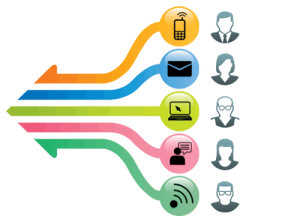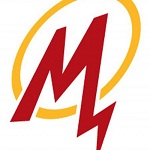
Workplace transparency is more than just a trendy term. It goes beyond leaders and employees coming together to openly discuss expectations and criteria for advancement opportunities. The “open door policy” is a very small step in the right direction. It’s more than “charming” to the young job seeker; it’s been proven effective.
For example, employees improve productivity when companies adopt a transparent model that reveals every employee’s salary. They are motivated to perform better if they are in the higher earning category or if they want to reach the status of other higher earners.
This is not as unconventional as you think. For example, Buffer, an application used for social media management, famously shares employees’ salaries, pricing models, revenue information, and fundraising processes with the company and even the public.
With so many intuitive platforms emerging, companies have the right tech tools to create a more engaged, transparent culture. Here’s a look at how technology can help facilitate workplace transparency in meaningful ways:
Real-Time Performance Tracking
Performance tracking tools afford the opportunity for instant feedback and recognition — both of which are driving forces behind engagement and productivity.
The 2015 Employee Recognition Report by the Society for Human Resource Management and Globoforce found that 90 percent of the 823 HR professionals surveyed said an employee recognition program positively impacted engagement. Furthermore, the study suggests recognition programs create a more human workplace and strengthen culture.
Performance tracking isn’t just for feedback purposes. It keeps employees engaged and informed on how they’re impacting large-scale goals, which improves satisfaction and motivation. Talent management technology creates this level of transparency so everyone can see how they are doing every day.
Even the employer wins. Real-time metrics guide management in how they can allocate tasks properly to maintain productivity and prevent work overload. After all, the “overwhelmed employee” has been regarded as an urgent trend by most executives surveyed in Deloitte’s March 2014 survey. Let technology help you unburden your staff when they start to struggle.
In-Depth Goal Setting
Workplace transparency consists of full visibility on all organizational levels. This can even be applied to tracking goals for individuals and teams. People need to see what success looks like to create steps on how to get there. Talent management technology provides on-demand visuals that show where people are in their goal setting. It provides the staff with ongoing updates, a vital practice for success.
A 2015 Dominican University of California study found that more than 70 percent of the 149 business group member participants who sent weekly updates to friends reported successful goal achievement, compared to 35 percent of those who kept their goals to themselves without writing them down.
When people share their goals, they make themselves accountable to more people than just themselves. Many platforms offer goal cascading, which shows how individual and team goals are structured toward the big picture, the organizational goals. This way, everyone is on the same page and knows their role in achieving the company’s vision.
Simplified Collaboration
With large-scale operations, collaboration can be incredibly difficult. With talent management technology that provides quick access to projects, anybody involved can evaluate, assesses, and contribute to ongoing tasks in an instant.
By simplifying collaboration, companies can keep everyone connected and notified in real time. It opens communication and facilitates effective teamwork through transparency, especially in the social feature found in leading talent management platforms.
Interactive Social Features
Social features, like employee profiles and message boards, can be engaging and motivate the workforce to communicate. It’s a simple method of encouraging people to share ideas and openly discuss upcoming events and changes in company policy, evaluate workflow process, or sometimes just discuss fun company competitions.
Not only does the social platform create a space to share, a digital bulletin board of sorts, but it also adds a personal aspect to the digital workspace. This can connect people from remote locations, as well. By connecting people digitally, companies encourage an honest, open environment devoid of secrecy.
Workplace transparency has never been more accessible, and the advancements in technology act as major contributions to the modern day business.
How are you using technology to create workplace transparency?
Business & Finance Articles on Business 2 Community(35)





